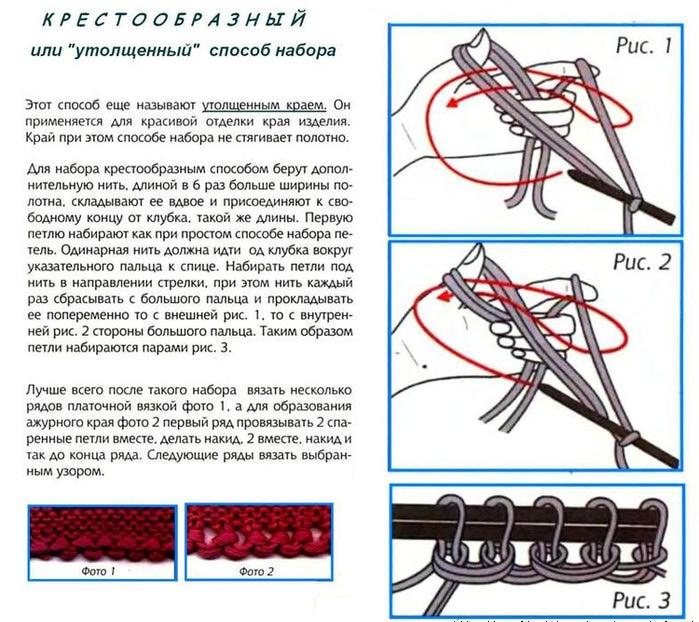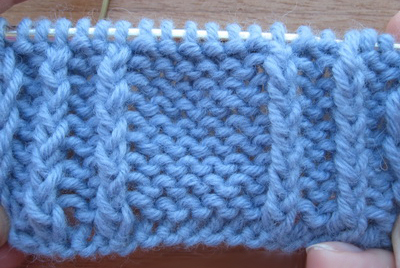
Subtlety and methods of knitting crossed hinges
Content
- Necessity of crossed loops
- How does the front crossed loop fit?
- Video: Original pattern from crossed loops
In the descriptions of different patterns for knitting with knitting needlesQuite often there is an indication of the need to knit crossed loops. In this article, we will not give diagrams or descriptions of all kinds of drawings in which they are used, but we will tell you how to knit such loops and what they are for.
Beginner knitters, faced with thisDesignation, often can not understand their purpose, they begin to look for descriptions or videos to get to the bottom of the truth - what is the difference between the function of such a loop and the usual one - maybe you should not bother, but knit them all, as usual? It's simpler and more customary. In fact, if the circuit requires it, it costs, and the indication of the need to cross the loop walls is always justified by the specific purpose of the crossed loops.
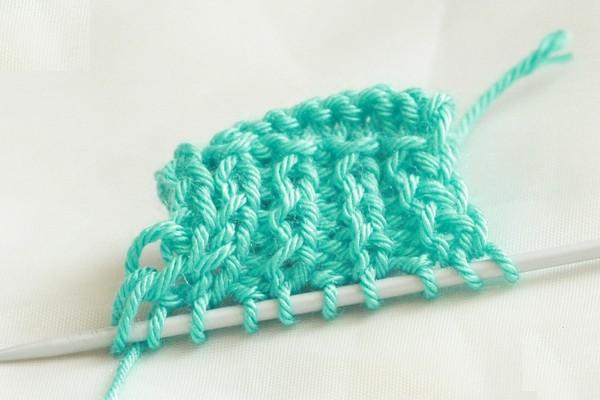
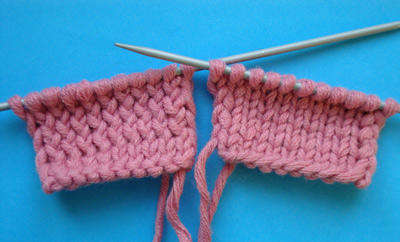




Necessity of crossed loops
And they have several appointments. They make more expressive arans - patterns with moving pet. With the help of the third knitting needle. In this case, crossed loops knit along the contour of the interlaced sections - the first and last. Then the interlacing turns out to be more outlined, and the braids, rhombuses and bundles - more accurate, convex and relief. Experienced knitters are aware of this feature and use it, even if the schemes do not specify it.
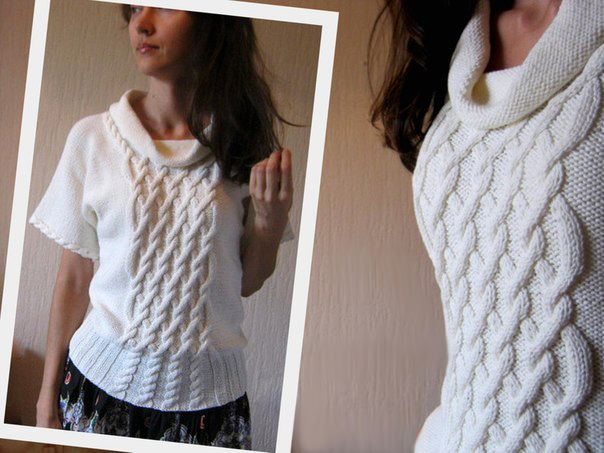
More elastic, less elastic, so muchBetter keep the shape when knitting rubber bands. Products with such elastic bands are less deformed when worn and, consequently, last longer. However, one should take into account another nuance: for such elastic bands, the density of knitting is greater than that of the usual ones. Therefore, when calculating the number of nets. For the set, as a control sample it is the rubber band made of crossed pet. When performing additions, when no holes are required from the crochets, the latter are knitted with crossed loops. This method allows you to fill the void due to their special structure.

Make clear and outlined flowers, stems, leaves (when knitting various knitting patterns from facial and purl loops).
The latter function is particularly widely used in Japanese patterns with complex eddies, when it is necessary to distinguish more clearly the texture of leaves, veins, etc. on a common canvas.

The truth here is to remember that they are knit togetherSpokes such loops still, as an exception, a special option, which, as you have already understood, has its clearly defined use targets, although it is used quite often. Therefore, it is not necessary to knit the usual drawings in this way - it can greatly change and even spoil the appearance of the pattern, and the result will not be the one that is needed. Although, if on the facial surface some contour knits crossed loops, then this texture will still stand out against the backdrop of the stocking fabric. In this way, for example, you can knit a canvas with your initials - they will not make the thing too intrusive, but, nevertheless, create a certain emphasis.
How does the front crossed loop fit?
Ordinary, classical facial crossedIt turns out, if you knit it by the front wall, located on the right knitting needle: the loop extends in such a way that the thread lies down "in the course of knitting", exactly and naturally. This method is used for knitting, for example, hosiery - without a pattern or with a color pattern, ornaments. Then in the purl series all the purlins are knitted, and the thread colors change, depending on the pattern of the ornament.

To cross the loop, you need to change the front andThe rear wall in places, "turn" the loop, so that on the right needle it crossed with the front wall, located on the left. For this, the front is knitted behind the back wall. (The needle is inserted into the loop not from the top, but from inside).
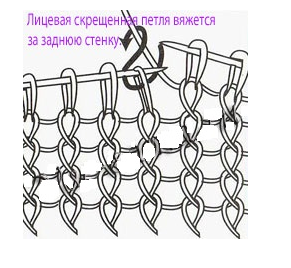
However, depending on the situation in whichCrossing of loops is applied, there are two ways of crossing the front. You need to know about this, so as not to spoil the impression of the picture in this or that case.
The first option is the usual one, which is used,For example, to form a closed supplement (without a hole). Or in the first row, if the patterns from the front and back loops require binding them in several rows. Then in the. A number you will have to knit this loop also crossed. The wrong loop is crossed the same way - by tying it behind the back wall. This is not very convenient, because the thread is in front of the work: you have to try very hard to put it on the spoke, which is passed behind the back wall, and then pull the spoke back again without loosing the loop. But if the scheme requires it - will have to adapt, otherwise your pattern will be different from the one conceived. Sometimes, in the description of the pattern, it is additionally stipulated whether this loop is sewn into the outboard. A number of ordinary out. Or with crossing.

The second option is when the front crochet is crossedAfter in its place the reverse loop was crossed in the previous row (or was tied in a "grandmother's" way). In this case, the rear wall of the loop is on the spoke on the left, that is, in front. And so that the front one does not "untwist" the loop of the previous row (then the pigtail will be uneven and ugly, as if "jumping"), but lay down in the same direction and also crossed, crossed the front, tying behind the left wall. In more detail and visually you can see this process on this video.
Video: How to knit crossed loops
Look at this photo: On the right - a beautiful pigtail from facial crossed loops, to the left - an uneven, dancing chain. Because the facial knitting for the right wall and turning the underlying inferior to the other side.

As you can see, knit crossed facial loopsQuite simply. But if this method appears in your arsenal, it will allow you to significantly expand the possibilities of knitting various drawings. Having shown attentiveness and patience when reading the schemes (especially with complex openwork segments), you can please yourself and your loved ones with a lot of beautiful things. True, for knitting lace patterns, you still need to master the nakids and tying the loops together. But you can read about it in other lessons on our website.




